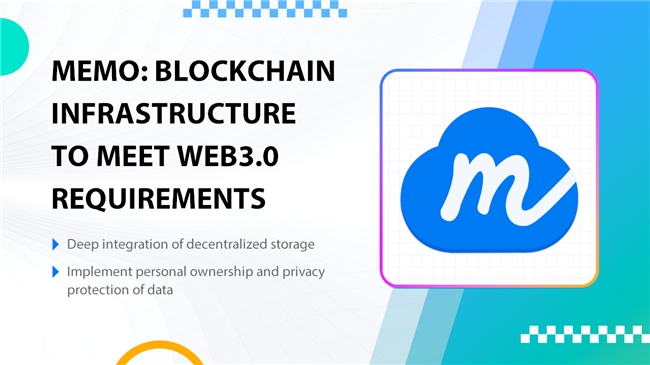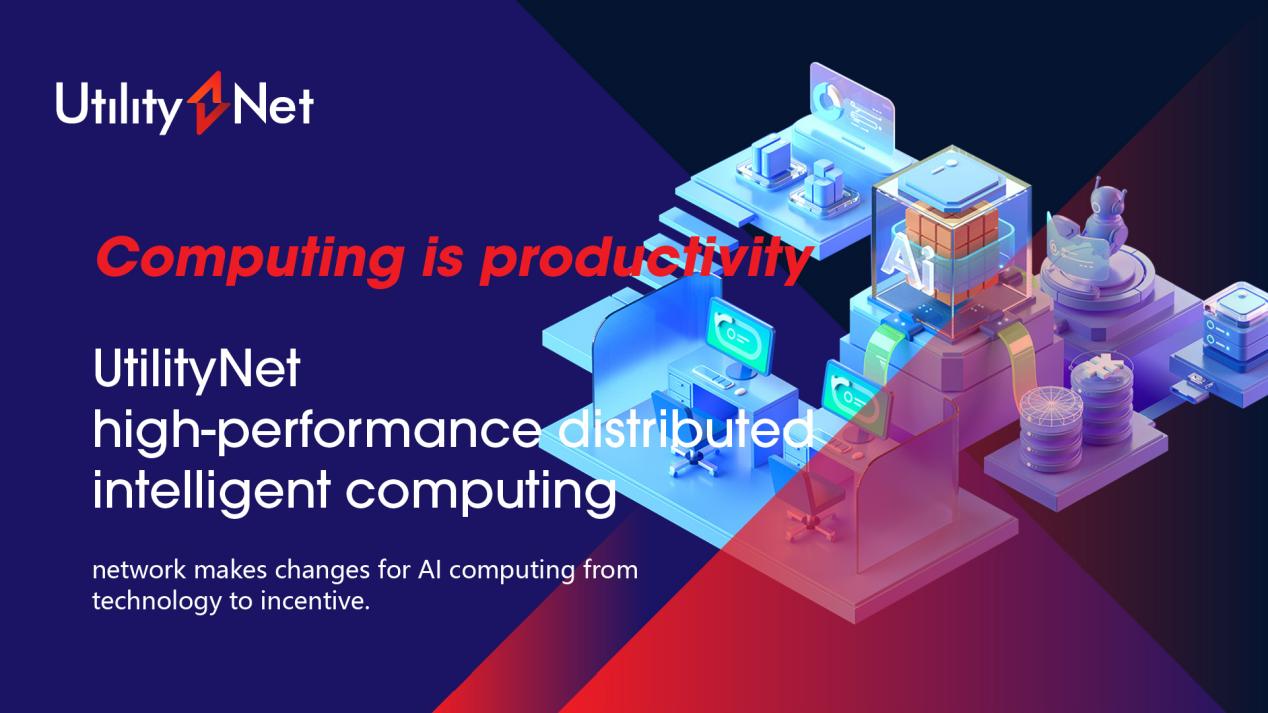MEMO: Blockchain Infrastructure to Meet Web3.0 Requirements

MEMO: Blockchain Infrastructure to Meet Web3.0 Requirements
With the rise of concepts such as NFT, Gamefi, and Metaverse, DApps have begun to evolve from the Defi domain to the NFT and gaming domains, and various decentralized applications have an increasing demand for storage. However, the existing blockchain has relatively limited storage space, high costs, and cannot meet the growing storage needs.
1、 Comparison of blockchain storage costs
According to the on-chain storage cost calculation, the cost of storing 1GB of data on the Ethereum main network is approximately $73000000, while the storage cost on Solana is approximately $1 million per GB. Similarly, the cost of storing 1GB of data on Avalanche also requires $988000. With the popularization of these public chains, data storage prices continue to rise.
Due to the high cost of storing data on the chain, most DApps typically rely on centralized servers and cloud providers (such as AWS, Google Cloud, and Microsoft Azure) to store data. For example, due to the storage limitations of Ethereum, most NFT files on Ethereum are stored on IPFS or other centralized platforms.
Although FileCoin and Arweave are decentralized storage solutions, they are not without their own shortcomings. FileCoin is a complex system, and its storage services are much more expensive than its centralized counterparts (AWS, Google Cloud). In addition, Filecoin has a data storage market and a data extraction market, so users are charged two types of fees. Storage fees allow users to access data, while extraction fees vary depending on the market conditions for data extraction, which also results in the lack of protection for users' data access rights.
In Arweave's storage solution, it is difficult to deeply integrate Arweave into existing blockchains because it is not compatible with EVM, and Dapps on other chains cannot be easily migrated to Arweave. With the growth of Web3 applications, the demand for blockchain performance is also increasing. We are all in need of a decentralized storage solution centered on Web3 and tailored for Web3.
II MEMO
The goal of MEMO is to become an ultra-high performance decentralized storage solution that deeply integrates decentralized storage functions; Developing infrastructure for WEB 3.0 applications, enabling ownership of personal data and handing it over to individuals for control; Becoming the best infrastructure for the metaverse; Establish a truly equal and free decentralized world. MEMO's vision is to become a Web3.0 infrastructure that is extremely user-friendly for both developers and users, with solutions including deep integration of decentralized storage and optimization of on chain transaction performance.
1. Deep integration of decentralized storage
The roles in the MEMO decentralized storage protocol are divided into User, Keeper, and Storage Provider, which can be a local hard drive or any space provider.
The network nodes of MEMO come from cloud service providers, data centers, and idle storage and computing devices of individuals and organizations. MEMO's incentive framework will allocate a certain amount of basic income based on the provided spatial services, and then receive certain rewards based on the quality of services provided.
The workflow of MEMO decentralized storage protocol is as follows:
When a User initiates a storage data request, the file is first sharded, and then multiple storage execution nodes are allocated based on the reputation of the provider. The execution node will select storage suppliers based on the reputation and resource status of each supplier, pass on these sharded data to them, and then record the corresponding metadata on the chain. According to the storage proof mechanism, the Keeper will periodically verify the storage proof with the provider. If the Keeper fails to verify the storage proof, the storage node will be penalized.
Storage cost: Storage cost is paid based on the size of effective data stored by the user and the actual computing power consumed by the storage provider.
MEMO integrates decentralized storage to meet the growing storage needs of decentralized applications and individual users.
2. Implement personal ownership and privacy protection of data
With the development of the Internet, personal identity has also changed: "consumers" in the Web1 era, "creators" in the Web2 era, and "owners" in the Web3 era.
In MEMO's vision of Web3, users have their own data ownership, rather than organization and enterprise; Global digital transactions are secure; The exchange of information and value data is completely decentralized.
The encryption industry has high expectations for Web3 and hopes that the Web3.0 network will remain open and transparent, while protecting the ownership and privacy of personal data. As one of the most important core concepts in the Web 3.0 era, ownership of personal data will also become a core feature of Web 3.0 applications. MEMO will address the issue of ownership and privacy protection of personal data, making it truly in the hands of individuals.
Decentralized databases and DApp containers
At the service layer, MEMO will provide a decentralized database and DApp container based on MEMO distributed storage, ensuring that DApp data is stored in a user controlled manner and has autonomous control over its data. Each application corresponds to a DApp container, through which user data is stored in a location controlled by the user. DApp requires user authorization to read data, and each user has their own access to the DApp URL, which is resolved through decentralized DNS.
Privacy computing
In addition to providing decentralized databases and Dapp containers to ensure ownership of personal data, MEMO also uses the following technologies to protect data privacy:
Zero knowledge proof, cryptographic techniques, fault-tolerant mechanisms for multiple copies and erasure codes, and RAFI data recovery mechanisms.
3、 Summary
The core of Web3 is user data ownership. With the rapid development of Web3, the data generated by users will be massive. Currently, no blockchain can afford such high storage costs. For example, Opensea, the largest NFT trading platform, stores metadata such as image information on a centralized server. Once the server is maliciously attacked, the user's NFT assets will face the risk of loss. Sometimes, Opensea may even randomly delete a user's NFT. These are all due to the security of user data storage not being well addressed and guaranteed.
If the storage security of data is not guaranteed, web3 based on user owned data will face danger. Therefore, decentralized storage solutions are an indispensable underlying infrastructure for the future Web3 revolution.
About MEMO
MEMO is a decentralized cloud storage system based on blockchain technology. It is designed to provide users and enterprises with ZB-level data storage services. MEMO achieves this by organizing and managing edge storage device resources dispersed around the globe. The system is built on Web3 infrastructure and uses DePIN scale construction to create a safe, reliable, and highly available large-scale cloud storage ecology with economic benefits.
The MEMO decentralized cloud storage system is designed with three roles: User, Keeper, and Provider. Role information and transactions are recorded and executed through smart contracts.
MEMO has a secure, efficient, and low-energy public verification mechanism, a flexible multi-level fault-tolerance mechanism, and an original data repair mechanism. This combination of features makes MEMO a reliable, secure, and scalable option with low energy consumption.
MEMO's research covers Layer2 data availability, EVM-compatible storage systems, data middleware protocols supporting multi-chain ecosystems like ETH and BTC, and decentralized social ecosystem convergence.

Recommend

Facilitation of inbound tourism promotes high-quality development of tourism in Shenzhen

Wyndham Rewards Brings Back Member Month

Pengkomputeran ialah P produktiviti. UtilityNet Mengubah Pengkomputeran daripada Teknologi Kepada Insentif .
MagicPower: Top Market Potential at CIIE

FREE UP Exchange Global Cohesion · Leading a New Era of Digital Finance

AI computing power shortage? UtilityNet proposes a groundbreaking decentralized solution.

Global Innovative Social Mining Platform - AI SMPAWG

Princess of Wales wins point against Roger Federer while playing tennis at Wimbledon

Princess of Wales wins point against Roger Federer while playing tennis at Wimbledon

Princess of Wales wins point against Roger Federer while playing tennis at Wimbledon
New
- 1VooPay: Ushering in a New Era of Global Crypto Payments, VOO Token to Launch on LBank
- 2VooPay and GC.Capital Forge Strategic Partnership with $1 Million Investment to Propel Web3 Ecosystem Growth and Innovation
- 3VooPay Partners with M3 DAO and Golden Carrot Capital: Enhancing the Web3 Spending Experience
- 4GSL Foundation Unveils a Groundbreaking New Crypto Ecosystem, Shaping the Future of Global Blockchain Finance
- 5Hangzhou Shares Inspiring Stories of Talent and Urban Synergy at the International Human Resource Exchange and Cooperation Conference
- 6"Starry Bright Peng City, Happy Moon Bay" The New Silk Road Art Troupe kicks off the 2024 International Artistic Talent Community and the National Day event!
- 7"Starry Bright Peng City, Happy Moon Bay" The New Silk Road Art Troupe kicks off the 2024 International Artistic Talent Community and the National Day event!
- 8Hangzhou Shares Inspiring Stories of Talent and Urban Synergy at the International Human Resource Exchange and Cooperation Conference
- 9MetaMars Token Price Continues to Surge: Innovative Business Model Fuels Long-Term Growth
- 10The Second "Shangri-La" Cultural Tourism Festival of the World Grandly Opens